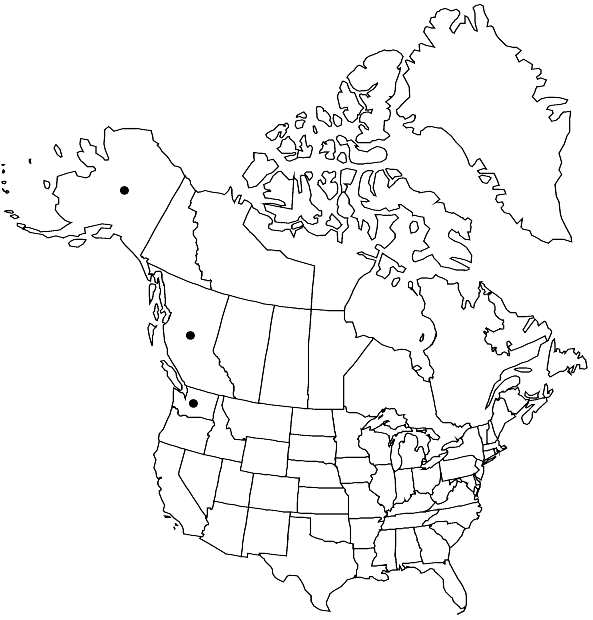Andreaea megistospora
Bryologist 90: 18, figs. 9–23, 25–28. 1987,.
Plants brown to black. Leaves erect-spreading or secund, subulate-lanceolate from an ovate base, widest in proximal half of leaf, apex symmetric; costa present, percurrent and sometimes filling the leaf apices, strong but narrow, bulging abaxially, usually reaching the leaf insertion; leaf margins entire or occasionally weakly crenulate; basal laminal cells quadrate to short-rectangular, marginal cells mostly rounded-quadrate, walls weakly pitted-sinuose; medial laminal cells rounded-quadrate, 1-stratose or 2-stratose in patches or completely, lumens rounded; laminal papillae smooth to papillose. Sexual condition cladautoicous or gonioatoicous; perichaetial leaves differentiated, convolute-sheathing. Spores (40–)50–90(–110) µm.
Habitat: Acidic rock
Elevation: low to moderate elevations
Distribution

B.C., Alaska, Wash., nw Europe.
Discussion
Andreaea megistospora is distinguished from the similar A. rothii by its large spores, and may simply prove to be a large form of the latter. The variety epapillosa is a minor variant commonly occurring in mixture with the typical variety, and doubtfully warrants a name.
Selected References
None.